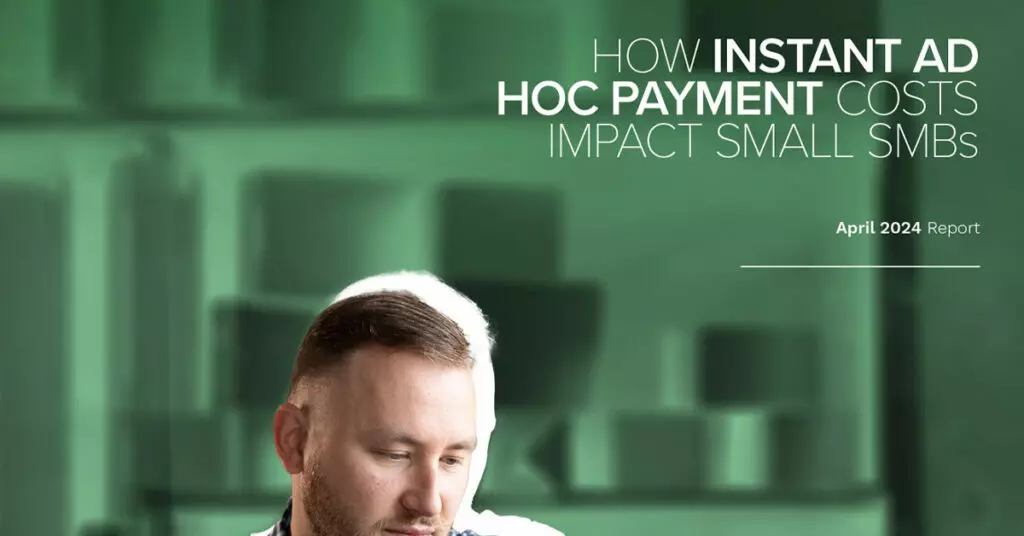The evolution of money movement, and of banking, are intrinsically linked. That’s why, as money became digitized and embedded, so too did banking, via the first iteration of the banking-as-a-service (BaaS) model.
But as digital, instant payments become regarded as the norm, and the BaaS 1.0 model’s rapid expansion reveals a risky and crowded landscape, the challenges observed in the industry, paired with concurrent advances in money mobility capabilities, have highlighted the urgent need for a more robust BaaS model.
Call it Banking-as-a-Service 2.0.
“BaaS 1.0 was, in some ways, tech companies focused on enabling tech companies. They would build a cloud core and bring together all kinds of third-party vendors to manage what we would call money mobility. The use cases were varied, and the source of the funds created a lot of risk and exposure as they ramped up fast with many startups, many different industries, all with small banks,” Ingo Payments CEO Drew Edwards told PYMNTS CEO Karen Webster.
The BaaS-led collaborative efforts between FinTechs and smaller banks did not come without consequences. Regulators are now turning their attention to the downstream risks associated with know your customer (KYC), compliance and risk management, fraud, and the financial safety of FinTechs and their partners. This increased scrutiny has resulted in regulatory crackdowns, creating service delivery issues and interruptions for customers.
That’s why, as Edwards explained, the time is ripe for BaaS 2.0 — an evolution which entails a shift away from API-enabling numerous third-party providers toward burgeoning sender-centric ecosystems that embed digital banking capabilities into their payout workflows.
“I don’t think for a minute that banking-as-a-service is going away, or that this concept of embedded banking is going away,” Edwards said.
The Evolution of Money Mobility
Per Edwards, the core of the BaaS 2.0 value proposition revolves around the changing definition of banking services for consumers and small to medium-sized businesses (SMBs).
“Now that instant payments are up and running, everyone is beginning to look at the economics and wonder, ‘How do we convert this into a revenue opportunity instead of a cost opportunity?’” he said. “In response, we are embedding instant account issuance with full functionality within the payout experience of our corporate partners, enabling them to safely offer embedding banking with super-low barriers to entry.”
One new approach to capturing the revenue opportunity inherent to BaaS 2.0, while limiting the risk for all parties, involves leveraging proven and proprietary tech stacks to seamlessly embed banking into the payout experience across various user interfaces. This departure from BaaS 1.0 involves siloing accounts within mini-ecosystems, with a fully owned tech and risk stack, reducing exposure to third- and fourth-party risks.
In advising companies on making the most of the BaaS 2.0 opportunity, Edwards highlighted three key actions as crucial: Pick a partner with a proven track record through economic and regulatory cycles; prioritize understanding of risk and compliance alongside customer experience; and recognize the value of experience in navigating complex regulatory environments.
“Ingo has been doing this for 22 years. We KYC and onboard new customers for banks across the country,” he said. “We’ve been satisfying the compliance concerns of issuing bank accounts for our bank partners in our check-cashing environment for a long time. And we’ve been meeting all of the different tests of fraud and compliance on money movement, moving billions of dollars in and out of these accounts. For us, it’s all proprietary, and adding embedded banking is a natural evolution.”
He added that Ingo’s focus on closed mini-ecosystems, where customer relationships and funding sources are well known, sets them apart from other BaaS providers.
Opportunities in Money Mobility Ecosystems
Revisiting the shift in how businesses view banking, Edwards noted that he is increasingly being asked not, “How cheap can you make this?” but instead, “How do we create an ignition strategy — how do we drive adoption in the direction that’s good for us all, while using something other than just a transactional payout. … How do we turn it into a recurring relationship within our ecosystem?”
And the answer lies at the heart of BaaS 2.0, which is being built around the needs of large corporates that have a lot to lose, and as a result are tremendously incentivized to avoid the red sea of risk in the BaaS 1.0 landscape.
As Edwards noted, Ingo’s new BaaS 2.0 model removes barriers to entry for corporate partners, offering a complete digital banking experience under a white-label framework, while at the same time it uniquely provides a migration path to a full set of APIs for those entities seeking more ownership and economic control as they scale.
After all, the ongoing call for a shift toward more proprietary, user-centric, and scalable solutions to support the growing demand for embedded banking capabilities in various sender-centric ecosystems is becoming a challenging one to ignore.







